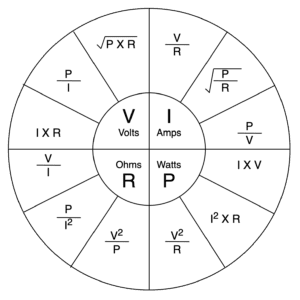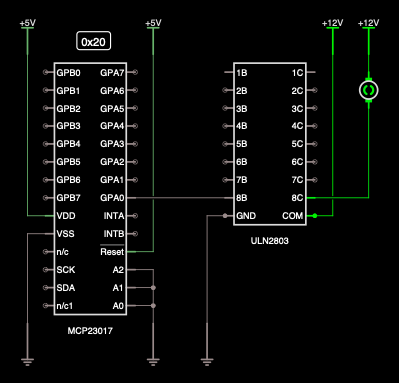Ohm’s law (sometimes written as Ohm law or Ohms law) is one of the fundamental first principles of electronics. The law was named after the German physicist Georg Ohm and states that the electric current through a conductor between two points is directly proportional to the voltage across the two points. This relationship describes the resistance to electrical flow between those two points (some materials do not obey Ohm’s law; these are called non-ohmic).
- I – the current through the conductor,
- V – the voltage measured across the conductor
- R – the resistance of the conductor. Ohm’s law states that the R in this relation is constant (see Learn about Resistors).
Watt’s Law
Sometimes added into this equation is P = I x V where P is power in Watts. P = I x V is not part of Ohm’s original law, it would be more accurate to call it Watt’s law, The law was named after James Watt, a Scottish engineer and chemist. Watt’s law defines the relationship between power, voltage and current.
- I, and V – Same as with Ohm’s law above
- P – The power dissipated in the conductor, for a resistor (or other imperfect conductor) this is as heat. In a filament bulb, some of this loss is as light.
While Watt’s law is not part of the original equation, it is commonly considered, incorrectly or not to be part of Ohm’s law. And given how often these two equations are used together, it is an understandable mistake.
Combining Ohm’s Law and Watt’s Law
The two laws are commonly combined into what is commonly known as Ohm’s Law wheel, or Ohm’s Law circle, unfortunately, this loses all reference to Watt’s Law. Which I am sure is where a lot of the confusion surrounding P = I x V, being the same as V = I x R comes from.
Other letters for Voltage
In non-English speaking countries, the letter U is commonly used for voltage, and sometimes E is used.
I would like to thank Ian Norton, for asking me about this topic, He and his boyfriend recently went to a VanLife electrics course where the two laws were mistakenly both described as part of George Ohm’s work.






